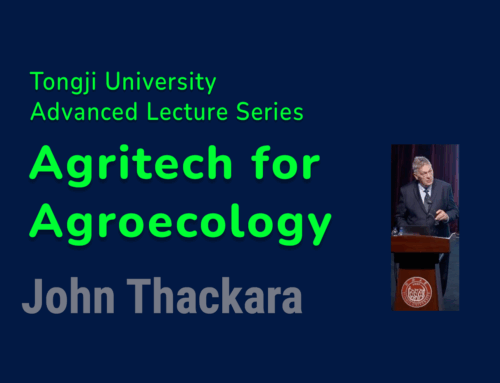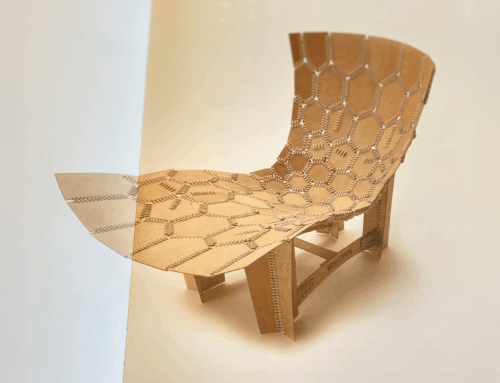This reader is prepared for the annual Back To The Land 2.0 summer school in Sweden that I run together with Konstfack (Cheryl Akner-Koler) and Annika Göran-Rodell
Annie Proulx on Barkskins
Or, how we first got the idea that the earth’s resources are limitless. Proulx’s story begins with the arrival in “New France” – the vast tract of north America and Canada colonised by the French between the 16th and 18th centuries. Two young men set out to earn their freedom by clearing an area of forest; they are soon awestruck by the imposing, often impenetrable and seemingly limitless extent of the forest.
Simone Weil on The Need for Roots
“Rootedness in a place is the most important and least recognized need of the human soul. It is one of the hardest to define. A human being has roots by virtue of his real, active and natural participation in the life of a community which preserves in living shape certain particular treasures of the past and certain particular expectations for the future.”
Pamela Mang on Storying of Place
“What makes a shift to true sustainability possible is the power of the connection between people and place. Place is a doorway into caring. Love of place unleashes the personal and political will needed to make profound change. It can also unite people across diverse ideological spectra because place is what we all share: it is the commons that allows people to call themselves a community. In every place, geology and nature interweave over time with human history and culture to create a place’s recognizable character and nature—its essence. Understanding these patterns helps reveal new possibilities for how to live in partnership with place, growing a future of greater abundance and creativity for all life”.
Street Food
A wonderful series of short (30′) films on Netflix.
Social Food Atlas
Social Food Projects include municipal gardens and urban farms; community meals; social harvest festivals; farmer-to-farmer meet-ups; food waste platforms; community kitchens; community baking and brewing sites; care farms; school gardens; street food festivals; cooperative grain growing; farm hacks; regional gatherings; farm tours; and many more.A two minute video is here. Among the key takeways: social food projects create ‘public goods’ in the form of social cohesion, public health, territorial development, food sovereignty, farmer livelihoods, learning, innovation, and biodiversity Bioregioning: Pathways to Urban-Rural Reconnection
My 6,000 word paper in China’s new design and innovation journal, She Ji. Main points: A metabolic rift runs through the economy and culture ||
The reconnection of urban and rural is an enabling condition for system change ||Bioregions reconnect us with living systems, and each other, through the places where we live || The design of social infrastructure enables the emergence of new enterprises ||Knowledge ecologies, not transmission channels, are the key to bioregional learning
Fred Provenza on “Nourishment: What Animals Can Teach Us about Rediscovering Our Nutritional Wisdom”
“As humans learn to eat combinations of foods that satisfy their nutritional needs and promote health and that knowledge becomes tradition, individuals within the community no longer consider which foods they eat or why they eat them. With time, people little understand or appreciate the biological or cultural origins of their diets. Nor do they realise when those norms change, as they have in the past century, in ways that are harmful. That’s especially true when people’s knowledge becomes detached from the acts of growing and harvesting foods. By raising our level of awareness of the knowledge we’ve lost, we can redesign ‘grazing circuits’ that better enable the health of herbivores and humans and the landscapes we inhabit.
Nick Hunt in conversation with Richard Powers about ‘The Overstory’
Richard Powers, author of The Overstory (recent winner of the Pulitzer Prize) writes about tree-consciousness, cultural epiphanies, a world going up in flames, and what lies beyond despair. “The idea, quite plainly put, is that there is no separate thing called humanity, any more than there is a separate thing called nature.…Now, when we look at a forest, we see a highly cooperative and interdependent system that you can almost think of as a superorganism”.
Jane Memmott on Ecosystem Interactions
Healthy ecosystems – including human ones – are all about connections and relationships. “All organisms are linked to at least one other species in a variety of critical ways – for example, as predators or prey, or as pollinators or seed dispersers – with the result that each species is embedded in a complex network of interactions. The sciences of the mid-20th-century, rooted in units and relations, have a hard time with three key biological domains: embryology and development, symbiosis and collaborative entanglements, and the vast worlds of microbes”. Memmott, Jane et al, ‘The Conservation Of Ecological Interactions’
Margaret Wheatley on Emergence
“Rather than worry about critical mass, our work is to foster critical connections. We don’t need to convince large numbers of people to change; instead, we need to connect with kindred spirits.” Through these relationships, we will develop the new knowledge, practices, courage, and commitment that lead to broad-based change.
Molly Scott Cato on Gaian Economics
“The heart of our problem lies not in the actions which destroy the environment, but in the economic system which causes them. The business of economics is about creating abstractions, imbuing them with power, and then using them to acquire resources. An understanding of the spiritual value of life and the ability to mediate between humans and the natural world are far more useful qualities for an economist than complex maths”
Ina Praetorius on the notion of a Care-Centered Economy
The German writer Ina Praetorius revisits the feminist theme of ‘care work’, re-casting it onto a much larger philosophical canvas. The Care-Centered Economy: Rediscovering what has been taken for granted suggests how the idea of “care” could be used to imagine new structural terms for the tire economy.
Eugenio Barba on The Dance of the Big and the Small (links to wikipedia)
“What do I see when I think of history? I see the dance of the Big and the Small. There are moments during this dance when we have swept along, and others when we ourselves influence the course of time…Children who build a small dam on the margins of the current of a great river, who make a tiny pool in which to bathe and splash around, do not play in the rushing current, yet neither are they separated from the water flowing in the centre of the river. They create, along its banks, small inlets and unexpected habitats, thus passing on to the future the marks of their difference.
Ann Whiston Spirn on Bacterial Urbanism
“Cities, and the people who live in them, are part of the natural world. Cities are habitats. Cities are ecosystems. And urban ecosystems are dynamic and interconnected. Ecological urbanism weds the theory and practice of city design and planning with the insights of ecology – the study of the relationships between living organisms and their environment and the processes that shape both. It’s an approach that necessarily interacts with other environmental disciplines, such as climatology, hydrology, geography, psychology, history, and art”
Gloria E. Anzaldúa on weaving
“Voyager, there are no bridges, one builds them as one walks…- all of us humans need to be nepantleras – bridge builders and reweavers of relationality…Weaving can also serve as an organising metaphor for life-centered design”. (Borderlands/La Frontera 1987).
Alvaro Morales on Planes de Vida (Life Plans)
“The territory is the vital space…The concept of territory is a shorthand for the system of relations whose continuous reenactment recreates the community in question … a space for the life projects of the communities”. The concept of a `plan of life’ was first perceived by the Guambiano, an Indigenous group living in the Cauca region of Colombia. The plan is designed to serve the future needs of the community as it pursues a path towards what is yet to come, but the standards by which the success of this project is measured are the values of the Guambiano elders. As Guambiano representative Alvaro Morales says, “The future is behind us.”
Arturo Escobar on Buen Vivir (interview)
“This is the moment to change our development model – from a growth-oriented and extraction of natural resources oriented model, to something that is more holistic…a collective well-being of both humans and non-humans…a view of design in tune with the radical interdependence of all life. In designing tools, objects, and institutions, we are designing ways of being.
Les Colibris on the Oasis Project and its ecosystem of tools and people
As part of the Oasis project, Colibris rethinks the notion of community as a source of wealth – new places of life as a model of more ecological society. An oasis can be found in rural or urban areas and take different forms: shared ecohabitat, eco-district, eco-hameau, commune in transition, third-place turned towards ecology. More than 500 such places already participate in the Oasis network. We have given ourselves five years to facilitate the creation of at least 100 new oases by creating an ecosystem of tools and people at the service of project leaders.
Robert Woodford on the Deep Time Walk app
The Deep Time Walk app helps people walk a story of Earth’s evolutionary journey – a new story that can reorientate us to where we come from – our origins, our purpose. A story that combines the latest scientific insights with the deep reverence inherent in our perennial traditions that bind us to life and the cosmos. The Deep Time Walk is experienced as a 4.6km walk, inspiring wonder and reverence for Earth, and galvanising positive action needed in our times.
James W Drescher on Enrichment Forestry at Windhorse Farm
Windhorse Farm is right in the heart of the Acadian Forest, one of six endangered forests of North America. Although the entire region has been severely abused over the past few hundred years there remain a few remnants of mature, fully functioning Acadian Forest. Windhorse Farm is one such place. Settled in 1840 by the Wentzell family, the woodlot has been harvested each year for the last 170 years yet has the same volume of standing timber today as it had when the first axe bit wood in 1840. It is, in fact, the longest standing example of forest sustainability in Canada. The experiment is less than 200 years old, just a blink of the eye in the life of a forest, even for the relatively young (less than 15,000 years) Acadian Forest.





